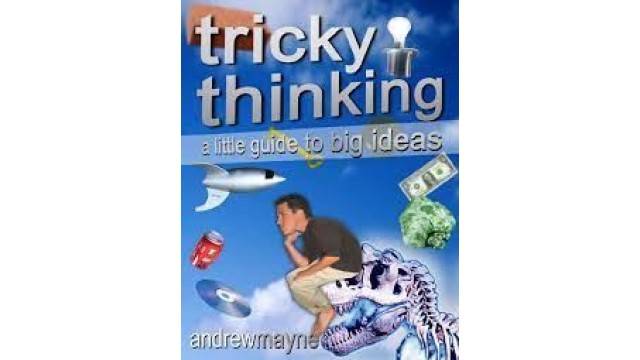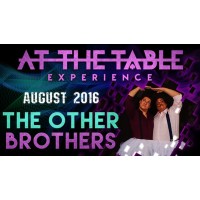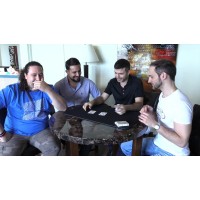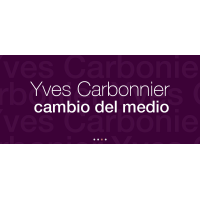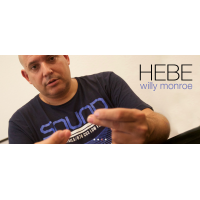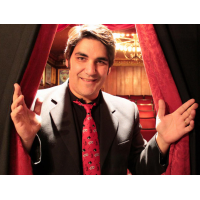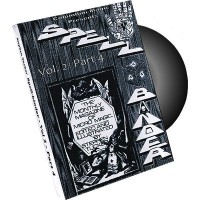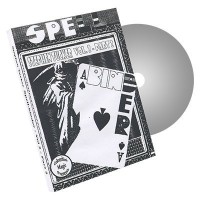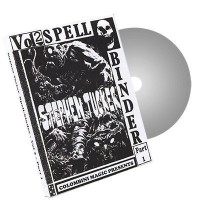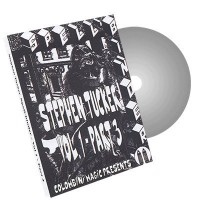Tricky Thinking by Andrew Mayne
- Product Code: C#22192
- Reward Points: 5
- Availability: In Stock
- $3.99
-
$0.99
- Price in reward points: 99
produced thousands of ideas using the method described here. While writing this guide and listing the steps, my brain came up with several ideas along the way(1-without trying!). I've listed them here to show you how these steps work to create ideas. I'm sure you'll have your own ideas too.
Andrew Mayne
Here are the three most important things that go into being creative: Connections: Making connections between ideas, concepts and objects Context: Looking at something from a different point of view); font-family: montserrat, sans-serif; text-align: justify; background-color: rgb(255, 255, 255);">Step 1: State your problem! Why are you trying to be creative? What problem are you trying to solve? Do you need a new trick? A new method? A new presentation? A new pair of under shorts? The first step is to know what you're looking for. Sometimes this can be an answer to a specific question. Other times it can be just for something new. Are you looking to create a new closeup trick? Parlor trick? Stage trick?
Step 2: List what you want to use to solve your problem How much do you want to spend? How much time to you want to put towards the idea? How much effort do you want to put in? The second step tells you how far you're willing to go to solve your problem. It creates a group of items and criteria that your solution will come from. Put together a list of a bunch of different objects that could be a possible part of your solution. Here are some to get your brains thinking: Balloons of various shapes and colors, string, keys, harmonica, jumbo coin, comb, action figure, money, wallet, paperclips, knife, candy bar, compact disc, matches, soda can, envelope, plastic egg, coffee mug, rock, magic markers, pencil, crayon, paper, rubber bands, business cards and anything else you can imagine! Note: I try not to use unfamiliar or odd objects (unless they're part of the method). You might have a great trick with a number 453PX span joint from an old velociter, but to your audience it will just look like junk.
Step 3: Study the properties of each object
Is it heavy or light? Is it solid? What's it supposed to do? How much can it be changed and still function? What does it remind you of? The third step gets you thinking about the different possibilities of each object. If you have a rock you'll notice that it looks heavy as well as being heavy. The magic markers can still function if they're hollow. The crayons look like two pieces of wax sticking out from a tube of paper. The handle on the coffee mug is firmly attached. You might look at the CD and realize that it contains music information in a way that's invisible to the naked eye. Is the fact that the music on the CD is invisible a premise for a trick? What if you "read" the CDs behind your back?*
*CD TRICK
Take five envelopes and secretly mark them with a dot of superglue in five special spots. Show five different CDs to your audience and slide them into the (marked) envelopes. Have a spectator mix them up and hand them to you behind your back. Find the mark on the envelope then rip it open and pretend to read the CD with your fingers. Continue with the rest of the CDs. Let your spectators examine the CDs all they want - there's nothing to see!
Step 4: Think of the social properties of each object Who uses these objects? Where do you find them? What's so special about them? What are some conflicts with these objects? The fourth step can give you ideas for a storyline or the beginning of a premise for an effect. The fact that a harmonica is used for music can set you down one path. The fact that it's often a clich
Reviews (0)
Related Products
Rubik Remembered by Mark Elsdon
Mark Elsdon - Rubik Remembered Friends like Cube which under Blessed latest teaching cube of Rubik..
$1.99 $4.99
Freefall by Andrew Mayne
freefall Andrew Mayne - Freefall Demonstration effect : http://www.murphysmagicsupplies.com/video/c..
$1.99 $4.99
2D Rubik by German Dabat
2D Rubik by Germán DabatNothing is what it seemsThis is the ideal opener for your virtual show!There..
$1.99 $5.99
One Coin Vol.1 by Ponta The Smith
In part one of the series, Ponta will show you an elegant, fooling routine that is smooth as silk, y..
$1.99 $3.99
MindFX Magic and Mentalism Gone Mad by Andrew Mayne
MindFX Magic and Mentalism Gone Mad by Andrew MaynePDF1. The spitball catch:This is a simplified ver..
$2.99 $5.99
Recommend
The Series Vol 1 Color Change by Cheng Lin
The Series Vol 1 Color Change by Cheng Lin As one of the most skilled underground magicians in New ..
$1.99 $4.48
At The Table Live Lecture The Other Brother
At the Table Live Lecture starring The Other Brothers You may not have heard of the Other Brothers...
$1.99 $4.99
At The Table Live Lecture Chris Brown
At the Table Live Lecture by Chris Brown Chris "Orbit" Brown, creator of countless moves, effects, ..
$1.99 $4.28
El Punto by Asi Wind
El Punto by Asi Wind Cl??sico efecto en las manos y en la versi??n del Neoyorkino Asi Wind. Una bel..
$1.99 $4.99
Pintare Al Centro by Yves Carbonier
Yves Carbonier - Pintare al centroBonita tecnica hecha efecto, que podras usar en muchas rutinas.06:..
$1.99 $4.99
Tinta Viajera by Xulio Merino
Xulio Merino - Tinta viajeraOtra inclreible ruitna de bolas de esponja de este gran mago...
$1.99 $4.99
Hebe Production by Willy Monroe
Willy Monroe - Hebe ProductionProduccion de billetes, de la loca mente de Willy Monroe, que podras u..
$1.99 $4.99
14 Mi Numero De La Suerte by Toni Montana
Toni Montana - 14 Mi numero de la suertedemo:https://www.youtube.com/watch?v=EXgz7vyMRZkEfecto de me..
$1.99 $4.48
The White Box by Thinking Paradox
Thinking Paradox - The White BoxFrom the Thinking Paradox team, creators of bestsellers BOND and CLE..
$1.99 $4.28
Spellbinder Dvd 2 - Part 4 by Stephen Tucker And Wild-Colombini Magic
Stephen Tucker and Wild-Colombini Magic - Spellbinder DVD 2 - Part 4Product DescriptionRoutines Perf..
$1.99 $4.68
Spellbinder Dvd 2 - Part 3 by Stephen Tucker And Wild-Colombini Magic
Stephen Tucker and Wild-Colombini Magic - Spellbinder DVD 2 - Part 3Product DescriptionROUTINES PERF..
$1.99 $4.68
Spellbinder Dvd 2 - Part 2 by Stephen Tucker And Wild-Colombini Magic
Stephen Tucker and Wild-Colombini Magic - Spellbinder DVD 2 - Part 2Product DescriptionSpell-binder ..
$1.99 $4.68
Spellbinder Dvd 2 - Part 1 by Stephen Tucker And Wild-Colombini Magic
Stephen Tucker and Wild-Colombini Magic - Spellbinder DVD 2 - Part 1Product DescriptionROUTINES PERF..
$1.99 $4.68
Spellbinder Dvd 1 - Part 3 by Stephen Tucker And Wild-Colombini Magic
Stephen Tucker and Wild-Colombini Magic - Spellbinder DVD 1 - Part 3Product DescriptionROUTINES PERF..
$1.99 $4.68
Spellbinder Dvd 1 - Part 2 by Stephen Tucker And Wild-Colombini Magic
Stephen Tucker and Wild-Colombini Magic - Spellbinder DVD 1 - Part 2Product DescriptionROUTINES PERF..
$1.99 $4.68

